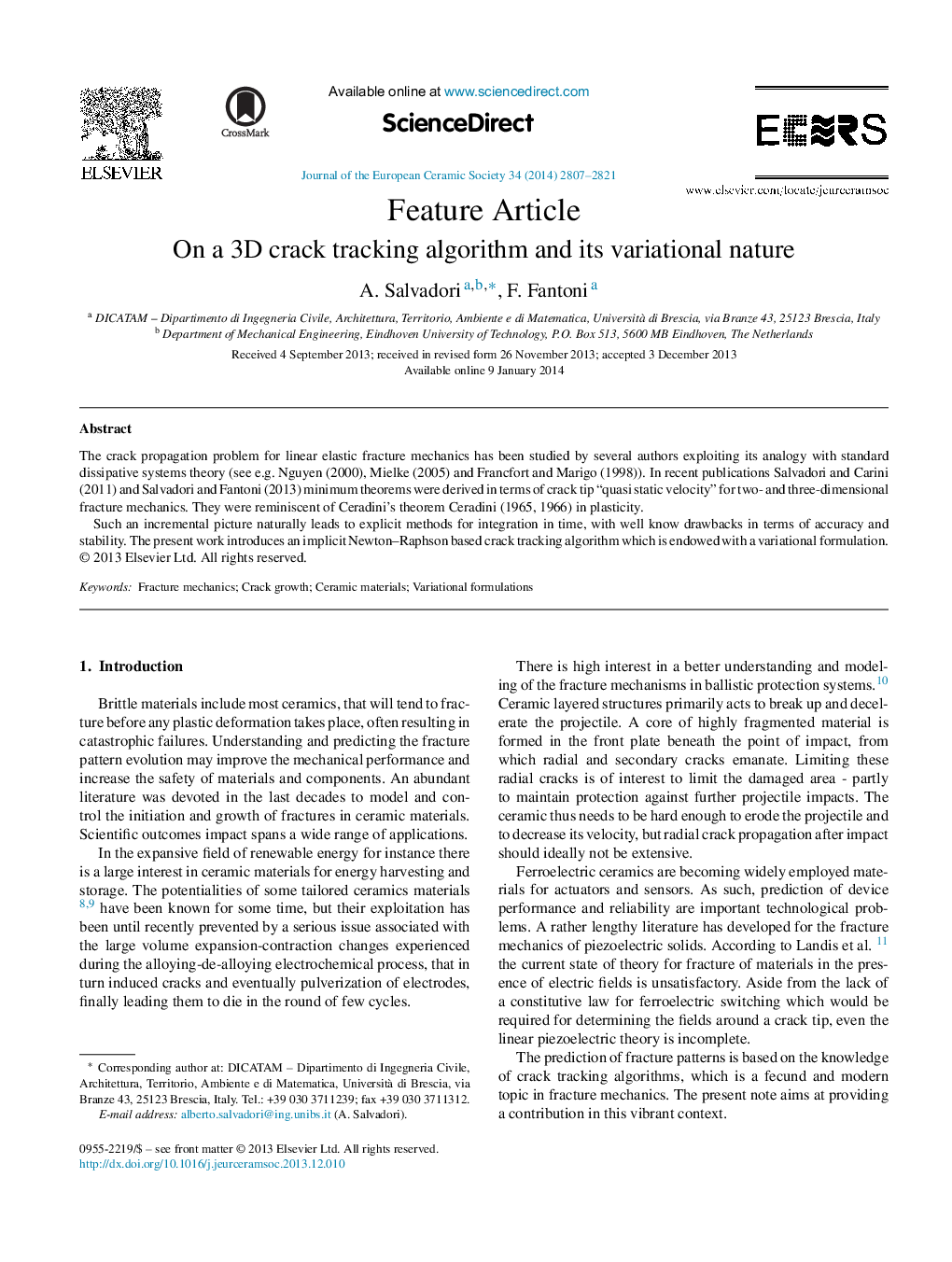| Article ID | Journal | Published Year | Pages | File Type |
|---|---|---|---|---|
| 1473951 | Journal of the European Ceramic Society | 2014 | 15 Pages |
The crack propagation problem for linear elastic fracture mechanics has been studied by several authors exploiting its analogy with standard dissipative systems theory (see e.g. Nguyen (2000), Mielke (2005) and Francfort and Marigo (1998)). In recent publications Salvadori and Carini (2011) and Salvadori and Fantoni (2013) minimum theorems were derived in terms of crack tip “quasi static velocity” for two- and three-dimensional fracture mechanics. They were reminiscent of Ceradini's theorem Ceradini (1965, 1966) in plasticity.Such an incremental picture naturally leads to explicit methods for integration in time, with well know drawbacks in terms of accuracy and stability. The present work introduces an implicit Newton–Raphson based crack tracking algorithm which is endowed with a variational formulation.
